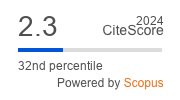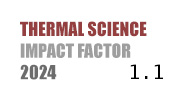THERMAL SCIENCE
International Scientific Journal
Authors of this Paper
External Links
COMPRESSED AIR-FLOW AND PHYSICAL PROPERTY IN MINE TUNNELS DURING CYCLIC CHARGING AND DISCHARGING
ABSTRACT
This paper utilizes CFD methods to simulate high pressure gas charging and discharging in a horseshoe-shaped tunnel. Simulation results reveal linear pressure and temperature variations during charging and discharging cycles, with stabilized trends after several cycles. The evolution of air physical properties such as density, viscosity, thermal conductivity, and specific heat capacity within the tunnel is also analyzed. The air density increases with pressure and decreases with temperature, stabilizing after several cycles. Viscosity and thermal conductivity exhibit similar trends to temperature, with minor variations throughout the cycle. Specific heat capacity increases during gas charging, remains constant during storage, and decreases during gas release. The study contributes to the optimization of CAES systems in abandoned coal mines by providing detailed insights into air-flow and heat transfer characteristics.
KEYWORDS
PAPER SUBMITTED: 2024-10-22
PAPER REVISED: 2024-11-25
PAPER ACCEPTED: 2024-12-12
PUBLISHED ONLINE: 2025-05-03
DOI REFERENCE: https://doi.org/10.2298/TSCI2502145C
CITATION EXPORT: view in browser or download as text file
2025 Society of Thermal Engineers of Serbia. Published by the Vinča Institute of Nuclear Sciences, National Institute of the Republic of Serbia, Belgrade, Serbia. This article is an open access article distributed under the terms and conditions of the Creative Commons Attribution-NonCommercial-NoDerivs 4.0 International licence

